What one should expect from Modi-Xi summit
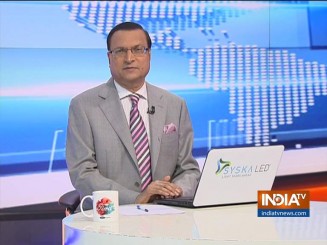 As Prime Minister Narendra Modi and Chinese President Xi Jinping sit down for their informal summit in the seaside town of Mamallapuram (old name Mahabalipuram) near Chennai, all eyes will be on the issues that the two leaders are going to take up.
As Prime Minister Narendra Modi and Chinese President Xi Jinping sit down for their informal summit in the seaside town of Mamallapuram (old name Mahabalipuram) near Chennai, all eyes will be on the issues that the two leaders are going to take up.
After the informal summit in Wuhan, China, it was decided that Xi would come to India for another informal summit with Modi. The historic town of Mamallapuram was chosen by Chinese experts as this 7th-8th century capital of Pallava kings had sea trade links with China.
Modi is considered a master of the art of informal diplomacy. His informal meetings with world statesmen like Donald Trump, Vladimir Putin, Shinzo Abe and Xi Jinping are known for his personal touch and these have already created waves in the world arena. Modi was lavishly treated to Chinese hospitality during his visit to Wuhan last year, and it was then that he decided to return the hospitality to the Chinese leader in India.
This ‘informal’ dimension is a new phenomenon in Indian diplomacy, almost unheard of till 2014. Almost all meetings of Indian leaders with world statesmen had over the years been structured and formal, and it goes to the credit of Modi that he has started this new trend of informal summits.
Apart from diplomacy, there is vision behind such informal summits. By showcasing places of historical interest to world leaders, Modi kindles worldwide interest of tourists about beautiful places in India. This gives a boost to local tourism and investment. The other benign byproduct of such visits is the development of infrastructure at such tourist resorts. This facilitates both Indian and foreign tourists as also the local tourist industry.
Modi will personally guide Xi through the famous monuments of Arjuna’s Penance, Panch Rathas and the Shore Temple, besides watching Bharatnatyam dance. He will be showing Chinese coins that have been unearthed in Mamallapuram by archaeologists that establish the 7th century connection of Pallava dynasty with the Chinese empire.
There is no structured agenda on the table, and the two leaders along with their advisers will discuss serious issues that affect both the region in particular and the world at large. Trade and security appear to be on top of the agenda. One should hope that the two big powers of Asia, representing nearly two-thirds of humanity, will come to a mutually beneficial understanding.
Click Here to Watch Full Video | Get connected on Twitter, Instagram & Facebook
Why Congress leaders are unhappy over Rahul ‘walking away’
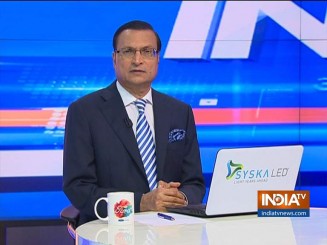 Senior Congress leader Salman Khurshid on Wednesday in an interview to a news agency, made caustic remarks about the present state of the party. He said, “Our biggest problem is our leader (Rahul) has walked away. It has kind of left a vacuum. Sonia Gandhi stepped in, but there is more than an indication that she is treating herself as a stop-gap arrangement. I wish it wasn’t so.”
Senior Congress leader Salman Khurshid on Wednesday in an interview to a news agency, made caustic remarks about the present state of the party. He said, “Our biggest problem is our leader (Rahul) has walked away. It has kind of left a vacuum. Sonia Gandhi stepped in, but there is more than an indication that she is treating herself as a stop-gap arrangement. I wish it wasn’t so.”
This remark comes at a time when party leader Rahul Gandhi is busy doing ‘vipassana’ meditation in Cambodia leaving the Congress party in the lurch, right in the midst of the crucial assembly polls in Maharashtra and Haryana. There is hardly any indication about Rahul returning in time for the election campaign.
This has caused consternation among party workers and leaders, who are already facing the colossal might of the BJP, already entrenched in power in these two key states.
It is really surprising that Rahul Gandhi left on vacation at a crucial time, when two of his close confidantes, Sanjay Nirupam in Maharashtra and Ashok Tanwar in Haryana, have raised the banner of revolt against the party high command. Everybody expected Rahul to stay in India and persuade these leaders, as both the state units of the Congress are wracked with groupism and dissension.
Rahul may not be the party chief now, but he had been the party president and prime ministerial candidate in the recent past and had steered the party for more than five years. Moreover, he is the son and political heir of the present party chief Sonia Gandhi.
If a person of the stature of Rahul leaves the party to its own fate, how can party workers accept him as a strong leader. The true test of a leader is at the time of crisis. The sooner Rahul Gandhi understand this, the better.
So long as Prime Minister Narendra Modi is in power, the Congress will continue to face challenges. However, the lackadaisical attitude of Rahul is not the only problem facing the Congress.
There is a serious crisis in the Congress party over the issue of taking stand on matters of national importance. The party leadership appears to be confused, particularly on issues like Balakot air strike, acquisition of Rafale fighter planes and revocation of Article 370.
When the Indian Air Force successfully carried out strikes on terror camps at Balakot inside Pakistan, Rahul Gandhi was in a dilemma – whether to support of oppose the action. Several senior Congress leaders questioned the IAF’s claim about success in the air strike.
Similarly, at a time when the nation was united on the issue of revoking Article 370 giving special status to Jammu & Kashmir, the Congress appeared to be confused – whether to support of oppose? Ultimately it had to fall in line and accept the Modi government’s action.
On the issue of acquisition of Rafale fighter planes, Rahul went to town and made it an election issue. He levelled serious charges against PM Modi but had no facts and evidence to support his charge. The Congress had to bite the dust at the hustings.
Similarly, on Dussehra day, when the Defence Minister Rajnath Singh performed ‘shastra puja’ in France during the hand over of the first Rafale plane to IAF, senior Congress leader Mallikarjun Kharge described it as a “tamasha”.
From time immemorial, ‘shastra puja’ has been a regular feature during Dussehra in India, and the Indian Defence Minister performing the pooja during the hand over was part of an annual ritual.
By describing this as a “tamasha”, the Congress is harming its fortunes, particularly at a time when voters will be going to cast their votes in Maharashtra and Haryana. There appears to be either lack of coordination among senior Congress leaders or there is a state of disarray and confusion in the party leadership because of the absence of a strong High Command. The sooner the Congress party puts its act together, the better.
Click Here to Watch Full Video | Get connected on Twitter, Instagram & Facebook
All credit for acquiring Rafale aircraft goes to PM Modi
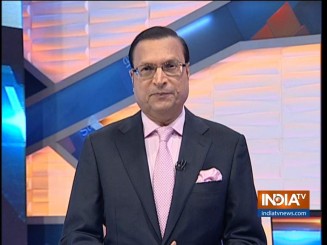 India received its first French-made fourth generation Rafale fighter jet in Tuesday with Defence Minister Rajnath Singh flying a sortie after the hand over. This is the first of 36 Rafale fighters to be delivered to India. The deliveries will be over in the next five years.
India received its first French-made fourth generation Rafale fighter jet in Tuesday with Defence Minister Rajnath Singh flying a sortie after the hand over. This is the first of 36 Rafale fighters to be delivered to India. The deliveries will be over in the next five years.
India is the fourth country after France, Qatar and Egypt to have the Rafale fighter aircraft in its air force. The new Indian Air Force chief Air Chief Marshal R. K. S. Bhadauria said, Rafale will surely be a “game changer” for the IAF. The aircraft’s strength lies in its advanced radar and an array of Meteor, Scalp and Mica missiles.
The Scalp missile has a range of 300 kilometres. It is an air-launched, stand-off missile aimed at targeting high-value assets like airbases, radar installations, communication hubs and port facilities. The Mica is a beyond visual range stealth interceptor missile. The Meteor is a beyond visual range air-to-air missile.
One should appreciate Rajnath Singh, at the age of 68, flying a sortie with the Rafale aircraft. It shows his mental agility and physical fitness. He sat inside the aircraft not as a passenger, but as a co-pilot. He gave the ‘thumbs up’ salute before he flew. The Raksha Mantri was wearing G suit and helmet. It is a visual that shall remain etched in our memory forever.
The Indian Air Force has been demanding this fourth generation fighter aircraft for the last 20 years. The first NDA government under Prime Minister A B Vajpayee had started the negotiation process, but the UPA came to power in 2004, and put a halt to this. For ten long years, the Ministry of Defence procrastinated and when Narendra Modi took over as Prime Minister in 2014, the process was put back on track at a faster pace. Modi personally went to Paris and it was decided to buy 36 fighter aircraft off-the-shelf because of IAF’s urgent requirements.
The Congress led by Rahul Gandhi made the Rafale acquisition a big election issue in 2019, but Narendra Modi stood firm in his resolve to acquire the aircraft for the IAF. All credit for acquiring the Rafale aircraft thus goes to Prime Minister Narendra Modi.
Click Here to Watch Full Video | Get connected on Twitter, Instagram & Facebook
How Pakistan is instigating protesters to cross LoC
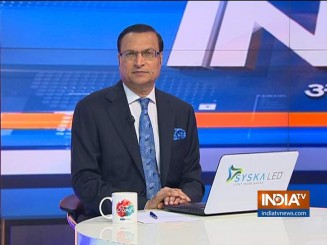 India TV in its show ‘Aaj Ki Baat’ on Monday night showed visuals of hundreds of protesters marching towards the Line of Control with the intent of crossing over to Kashmir valley “to express solidarity”. This is nothing but a desperate gambit by the Pakistani establishment in order to cause conflagration on its border with India. Most of the Pakistani politicians, including Prime Minister Imran Khan, have been egging on these ‘jihadi’ protesters to march towards the LoC for the last several days.
India TV in its show ‘Aaj Ki Baat’ on Monday night showed visuals of hundreds of protesters marching towards the Line of Control with the intent of crossing over to Kashmir valley “to express solidarity”. This is nothing but a desperate gambit by the Pakistani establishment in order to cause conflagration on its border with India. Most of the Pakistani politicians, including Prime Minister Imran Khan, have been egging on these ‘jihadi’ protesters to march towards the LoC for the last several days.
After failing to get international support on Kashmir issue at the UN General Assembly, Pakistan has now resorted to fomenting violence and tension near the LoC. Its army has failed in infiltrating terrorists into the valley in the face of utmost vigil by our security forces.
Till now, the Pakistani politicians have managed to gather hardly three to four thousand protesters to march towards the LoC in the last three days. Pakistan PM Imran Khan had earlier given a call to these protesters to march towards LoC, but later realizing the repercussions, he had quickly appealed to them not to move.
It was Imran Khan who had asked the protesters to wait till he returned from the UN General Assembly. After returning empty handed, Imran Khan has now asked supporters to go ahead with their march.
The Pakistani leadership had hoped that millions of people would come out to join the march, but it did not happen. Only a few thousand protesters assembled, began their march from Bhimbher Gali near the LoC, and went up to the POK capital Muzaffarabad, where their number dwindled further. The protesters have now reached Chakothi, near the LoC.
The Pakistani establishment understands the legal position that crossing an international border is a serious offence. To hoodwink the international media, it has therefore put large containers manned by armed policemen to block the protesters.
This is nothing but a charade, because the Pakistani army wants the protest march to swell in numbers, so that violence can be instigated, particularly near those border outposts, where cross border firing has been going on for several months.
The Pakistani establishment has appointed ring leaders to egg on the innocent villagers taking part in the march to walk towards the LoC, but most of the protesters are unwilling to go further. The Pakistani authorities have practically abandoned them to their fate.
India TV showed several protesters denouncing the Pakistani army and political leaders, for pushing them towards death without any food or logistical support. At least two protesters said on India TV that most of the bazaars in the towns of Chakothi, Muzaffarabad and other places were closed down in a hurry, so that they could be deprived of food. One of them complained that the “army has sent us to kabristan (burial sites)”.
Pakistan PM Imran Khan is facing twin challenges: one, how to convince the common Pakistanis to trust his leadership, and two, how to maintain a cordial balance with the all-powerful army.
He has already admitted his failure in garnering international support on the Kashmir issue, and is now hell bent on keeping the issue alive, by instigating his own people. Imran Khan knows that his days will be numbered the moment the Kashmir issue fizzles out.
The despatching of innocent villagers masquerading as protesters towards the LoC is a last ditch attempt by a beleagured Prime Minister, but this is also bound to fail. Imran Khan is now staring at the ominous writing on the wall.
Click Here to Watch Full Video | Get connected on Twitter, Instagram & Facebook
Pakistan should heed to new IAF chief’s warning
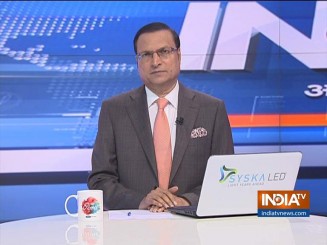 The new Indian Air Force chief Air Chief Marshal Rakesh Kumar Singh Bhadauria has given an oblique warning to Pakistan not to resort to any terror misadventure in view of bilateral tension over abrogation of Article 370 by India.
The new Indian Air Force chief Air Chief Marshal Rakesh Kumar Singh Bhadauria has given an oblique warning to Pakistan not to resort to any terror misadventure in view of bilateral tension over abrogation of Article 370 by India.
On Friday, the IAF issued a promotional video which showed the air strike power of our air force. The video has clips of people expressing anger after the Pulwama terror attack, a few shots of officers sitting in a war room planning an operation, followed by clips of Mirage fighter jets taking off. There are also a few clips of IAF jets destroying terrorist bases and a couple of satellite images showing the areas which were hit.
The Air Chief was quick to clarify that it was not a video of Balakot air strike, but was a promotional video for Air Force Day (October 8). But the accompanying remarks of the IAF chief should act as a warning to Pakistan.
The Air Chief said, “we were prepared then, we will be prepared next time, we will be ready to face any challenge, any threat”. He also said, the air force is aware of the reports (of Pakistan reactivating terror camps at Balakot), and we will take necessary action as and when required.
We must recall what Pakistan Prime Minister Imran Khan said while addressing the UN General Assembly. He had claimed that the IAF could only destroy eight or ten trees in Balakot, and there was no other damage. The fact is that the IAF completely destroyed the Jaish terror camps that were active in Balakot using the latest smart bombs. Till this date, Pakistan army has not allowed mediapersons to visit the destroyed terror base in Balakot freely.
Imran Khan had also warned at the UNGA that terror groups may launch more attacks inside India after the abrogation of Article 370. The Indian Air Chief has now given his reply effectively, both through words and pictures.
Click Here to Watch Full Video | Get connected on Twitter, Instagram & Facebook
Why Shiv Sena decided to field Aaditya Thackeray in assembly polls
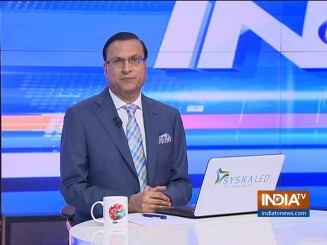 On Thursday, 29-year-old Aaditya Thackeray became the first scion of Thackeray clan to enter electoral politics. Shiv Sena, the party founded by his grandfather Balasaheb Thackeray, has fielded the young leader from Mumbai’s prestigious Worli constituency.
On Thursday, 29-year-old Aaditya Thackeray became the first scion of Thackeray clan to enter electoral politics. Shiv Sena, the party founded by his grandfather Balasaheb Thackeray, has fielded the young leader from Mumbai’s prestigious Worli constituency.
Shiv Sena was founded in 1966 by Aditya’s grandfather Balasaheb Thackeray, and in the last 53 years, the party had never fielded any member of the Thackeray clan to contest elections. Shiv Sena chief Uddhav Thackeray went to the Returning Officer with his son Aaditya for filing nomination papers.
Since this was a historic moment, the party threw its entire weight to stage a big road show as hundreds of drum-beating Shiv Sainiks took part in the march from Lower Parel to Worli. Uddhav Thackeray’s wife Rashmi and other senior ministers were also present.
Maharashtra chief minister Devendra Fadnavis rang up Aaditya Thackeray to congratulate him for entering the electoral fray. On his part, Aaditya posted on social media a picture of him bowing before a portrait of Balasaheb Thackeray before leaving home to file the nomination.
Uddhav Thackeray never contested elections in his life nor did his father Balasaheb Thackeray. With the changing times, Uddhav has now decided to veer away from family tradition as he wants his son to take up his mantle after going through the rough and tumble of electoral politics.
Aaditya has been fielded from Worli, a Shiv Sena stronghold in Mumbai, and it will surely send a good message to his party supporters, both in India’s financial capital and in the hugely populated suburbs surrounding Mumbai.
Already, Shiv Sena leaders have started projecting Aaditya as their chief ministerial candidate, but nobody can predict how the Shiv Sena-BJP alliance will perform in this month’s assembly polls. In the end, it will all depend on the number of seats that the Shiv Sena and its bigger ally BJP are going to win.
Click Here to Watch Full Video | Get connected on Twitter, Instagram & Facebook
Modi fulfills one big promise, an open defecation free India
 More than five years ago, on August 15, 2014, Prime Minister Narendra Modi in his first address to the nation from the ramparts of historic Red Fort, vowed to fulfill Mahatma Gandhi’s dream of a clean India on his 150th birth anniversary in 2019. A nationwide Swachh Bharat project was launched in order to build toilets in all villages of India.
More than five years ago, on August 15, 2014, Prime Minister Narendra Modi in his first address to the nation from the ramparts of historic Red Fort, vowed to fulfill Mahatma Gandhi’s dream of a clean India on his 150th birth anniversary in 2019. A nationwide Swachh Bharat project was launched in order to build toilets in all villages of India.
Over centuries, women in rural India had to suffer the humiliation of being forced to defecate in the open, in the absence of toilets in rural households. October 2 this year was, in a sense, a day of celebration for Indian womanhood, as our Prime Minister declared India open defecation free on Wednesday.
“The world is amazed at our success. In five years, we have built more than 11 crore toilets for 60 crore population”, said Modi.
According to official data, all 699 districts in India have been declared ODF. The data show 100,748,884 toilets have been built in 599,963 villages across India. From 38.7 per cent coverage of toilet cover in rural India in 2014, it has now reached 100 per cent.
Till five years ago, women in Indian villages had to wait till dusk to defecate in the open. They used to move in groups to the open fields to ease themselves in the dark. It was nothing short of a tragic situation. Today, with toilets built in households, women do not have to venture out in the dark. Now women themselves take care of cleanliness in their toilets, because they understand the importance of a toilet in daily life.
Modi said, this is only a brief half in the march towards progress. Work has already begun on the Jal Jeevan Mission, which is aimed at providing piped water to all rural households by 2022. On Wednesday, Modi also announced another ambitious project – putting an end to use of single-use plastic across India by 2022.
Single-use plastic has become the bane of world’s environments. It is my ardent belief that Modi will be successful again this time. I would appeal to all sections of society to stop using plastic bags and instead use jute bags for daily use. Let us do our small bit in the interest of our future generations.
Click Here to Watch Full Video | Get connected on Twitter, Instagram & Facebook
Why Amit Shah said in Kolkata, Bengali Hindus will not be deported
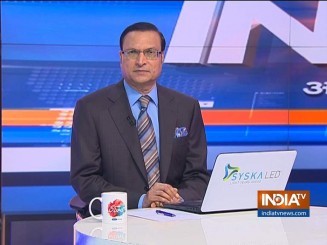 Home Minister and BJP president Amit Shah on Tuesday, addressing a convention of party workers in Kolkata, made it quite clear that not a single Bengali Hindu will be deported. Shah said the government will soon enact the Citizenship Amendment Bill (CAB) before enforcing the National Register of Citizens (NRC).
Home Minister and BJP president Amit Shah on Tuesday, addressing a convention of party workers in Kolkata, made it quite clear that not a single Bengali Hindu will be deported. Shah said the government will soon enact the Citizenship Amendment Bill (CAB) before enforcing the National Register of Citizens (NRC).
Shah said: “CAB will precede NRC, so refugees need not worry”. The CAB guarantees citizenship to all non-Muslim refugees who have come to India from neighbouring countries. The Modi government tried to pass the bill in Parliament during its first term, but could not.
Shah said, “people of Bengal are being misled about NRC. The Modi government will not drive out a single refugee. I assure all Hindu, Buddhist, Sikh, Jain refugees they won’t have to leave the country, they will get Indian citizenship and enjoy all the rights of an Indian national.”
The Home Minister said, “Bengali Hindus are being harassed in the name of NRC, and I have come here to clear the confusion. Mamata Banerjee’s contention that Hindu refugees will also be driven out is absolutely false. No Bengali Hindu refugee will have to leave India.”
The Home Minister however said that the government will not allow “even a single infiltrator to stay in India.” Amit Shah’s comments come in the wake of reports of thousands of refugees, both Hindu and Muslim, lining up outside government offices in Bengal to get birth certificates and ration cards to prove their domicile. Rumours are being spread that refugees who had come from Bangladesh (erstwhile East Pakistan) will have to prove their domicile during the NRC drive.
Amit Shah also assured Bengali Hindus that they would be given full liberty to celebrate Durga Puja, Ram Navami, Janmashtami, Hanuman Jayanti and other festivals. The Mamata Banerjee government had issued restrictions on some of these festivals during recent years.
Amit Shah has made his intentions quite clear. He has not minced words in saying that the minorities appeasement policy being followed by Mamata Banerjee government will be discontinued if the BJP comes to power in Bengal. To Amit Shah goes the credit of changing the political lexicon in most of the states of India, and he has conveyed the message to Hindus of Bengal in clear words: there shall be no appeasement of minorities.
Over last several decades, most of the political parties in Bengal have been following appeasement policy in order to garner the Muslim vote bank. By winning 18 Lok Sabha seats from West Bengal, Amit Shah has proved that elections can be won in the state without appeasing minorities’ vote banks. Mamata Banerjee is now worried because she is gradually losing the support of the Bengali ‘bhadralok’ (middle class) Hindus in her own state.
Click Here to Watch Full Video | Get connected on Twitter, Instagram & Facebook
How civic apathy caused deluge in Patna, Varanasi
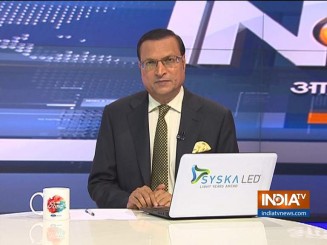 After torrential downpour for nearly 72 hours, Bihar’s capital Patna witnessed massive waterlogging affecting 16 lakh out of its nearly 20 lakh population. Lakhs of residents were forced to live without electricity and phone connections, as rising water level from Ganga flooded vast areas of the city.
After torrential downpour for nearly 72 hours, Bihar’s capital Patna witnessed massive waterlogging affecting 16 lakh out of its nearly 20 lakh population. Lakhs of residents were forced to live without electricity and phone connections, as rising water level from Ganga flooded vast areas of the city.
This was the second heaviest rainfall in Patna in the last 50 years, and among those marooned was Bihar’s deputy chief minister Sushil Kumar Modi. He and his family members had to be rescued by boats by the State Disaster Response Force. Thousands of vehicles in the city were completely submerged in the deluge. Marooned people were forced to live for three days without drinking water.
Chief Minister Nitish Kumar undertook an aerial survey of Patna’s waterlogged areas on Monday. Heavy rains have also caused damage in 15 other districts of Bihar, as the rising water levels of Ganga damaged embankments in Nalanda and Jehanabad.
The main cause of waterlogging in Patna appears to be inexcusable civic apathy on part of the local authorities towards the city’s drainage system . Drains in the city have been built over the years without any scientific planning. Over the last several decades, the focus was only on low lying areas on the flood plains of Ganga, and there was simply no plan for a situation if the water levels of Ganga rose.
Senior BJP leader and Union Minister Ashwini Choubey made an insensitive remark by saying that heavy rains during ‘Hathia nakshatra’ (constellation of stars) are always severe.
A minister citing star constellation as the reason for downpour in the 21st century seems to be more of a joke. Almanacs are prepared by astrologers in advance and if the minister believed so much in the theory of star constellations causing rainfall, he could have alerted his colleagues to make preparations.
The main cause behind waterlogging in Patna was simple: most of the drains in the city were choked, and nobody bothered to clean them up before the monsoon set in. This should serve as an eye opener to the Bihar government about the need to revamp the civic drainage systems in Patna and other towns.
In Varanasi, heavy rains caused waterlogging in the city, and the Prime Minister who was in the US had to ring up the UP chief minister to take immediate steps to tackle waterlogging. Union minister Mahendra Nath Pandey was sent to Varanasi to oversee relief work. CM Yogi Adityanath visited Varanasi on Sunday.
Hundreds of crores of rupees were spent during the past five years to revamp Varanasi’s drainage system. There must be a probe to find out how the funds meant for drainage system revamp were spent.
Click Here to Watch Full Video | Get connected on Twitter, Instagram & Facebook